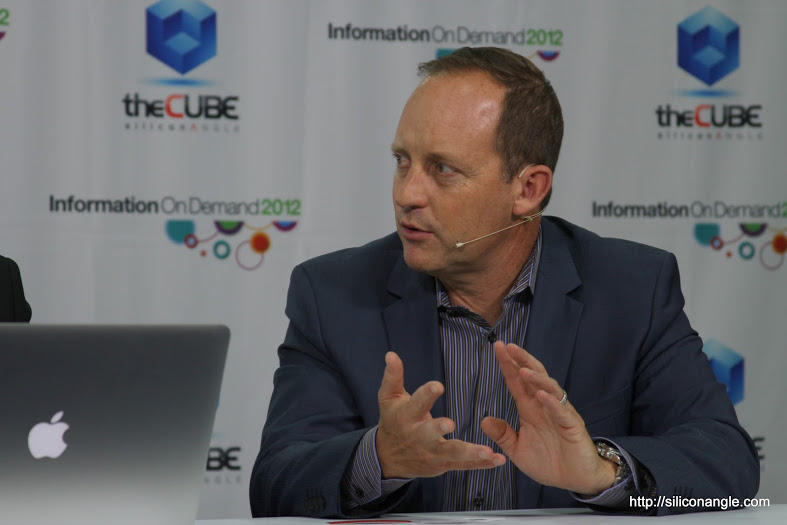 NEWS
NEWS
 NEWS
NEWS
 NEWS
NEWS
![]() Ken Bisconti, IBM Product and Strategy for the Enterprise Content Management sat down on theCube with Furrier and Vellante. As VP of enterprise content management, Bisconti is focused on products and strategies. He shares his perspective with Dave and John on these mega-trends that are emerging and how IBM is meeting the demands.
Ken Bisconti, IBM Product and Strategy for the Enterprise Content Management sat down on theCube with Furrier and Vellante. As VP of enterprise content management, Bisconti is focused on products and strategies. He shares his perspective with Dave and John on these mega-trends that are emerging and how IBM is meeting the demands.
Content management has been around for a while now, yet it has evolved to the point where it is coming together with growing technologies such as big data and that’s where these solutions come into play. Unstructured data is a huge focus, reports support that unstructured data is growing at a tremendous pace. Many organizations are struggling with the challenges of how to manage the data in many fields including such issues:
IBM is showing the way, using strategies and technology combined to deliver autonomous and precise management of this data, producing exception value to the business. The challenges are many, with the increased focus on information risk, the inflection of big data can be viewed as both an asset and a liability. The interest lies in multiplying the value of data, through insight and putting these initiatives into action, ultimately improving business altogether and improving customer experiences. The flip-side of that is the incredible costs involved – the volume of data is increasing as a factor at a double-digit rate from year to year, many are storing everything, from many sources – this may be tied to a fear of deleting anything. This is a risky strategy, implementing costs and increased risks throughout. While it is true that storage consistently gets cheaper, the increase in volumes of data leads to greater risk and costs in terms of regulatory compliance, legal risks, litigation support cost, governance fines and more.
In order to defensibly delete information, a holistic approach is required. Many organizations don’t have coordination between business units in place effectively. With information lifecycle governance, the product of content sources, ability to collect, coordinating a global data plan, a critical element to the system is the decision management layer. That’s where the coordination comes in. Automated policy application can then be implemented. This is a product based on the 2010 acquisition of PSS Atlas, an e-Discovery technology that performs analysis, management and disposal, tiered with IBM’s leading analysis and processing technology.
The conversation also turned to social media and the transformation that business has taken in those realms. To that point, Bisconti discusses the evolving definition and human elements in creating best practices. Social is changing the industry, organizations are looking to engage with customers in new ways, so social content care is applied in order to create greater customer insight, and injecting transformational social capabilities into traditional lines of business.
Organizations commonly find that over 50% of what they store has little to no actual value. When weighed against the risks and costs, together they structure the ROI of defensible disposal. Hard costs and reduce risk posture. An interesting statistic is discussed in that some customers are facing 1200+ active litigation points at any given time, making a strategic data plan all that more important. Some IBM customers are looking at saving hundreds of millions of dollars over the next 3-5 years by simply executing defensible disposal initiatives.
IBM’s solutions use content assessment, analytics assessment, executing retention instructions based on time and event based instructions, and classifying data including automatically using natural language processing. Technology becomes an assistant, rounding out the holistic solution and coupled with coordination, enables the ability to answer these problems.
Tying this in to Big Data, take a look at customer relationships. Big Data in business makes companies more competitive, more engaged, more everything. There is an unwritten contract in that customers have the expectation of an interactive, tailored engagement from a company; else they take their engagement elsewhere. Applying Big Data, grooming the data, integrating into social, dealing with privacy, security, creating meaningful information – all of those things are data points that require a proper plan for data.
Some of the hottest areas today revolve around these principles. Database, data science, navigating that collision that exists between social, Big Data, ECM, cloud, and more is a critical need of skills. The certified information professional, a certification created by AIIM, has the knowledge around these data concepts, such as the difference between privacy and access control, how to apply predictive analytics, social media analytics, where and when – just to name some of the skills required.
The key challenge for businesses today is to not get mired in technology. Get down to the business problem, set goals and objectives, and then look at what technology can be applied. Basically, don’t go about boiling the ocean, but keep that vision of next phases throughout, once you have laid out the business objectives.
Support our mission to keep content open and free by engaging with theCUBE community. Join theCUBE’s Alumni Trust Network, where technology leaders connect, share intelligence and create opportunities.
Founded by tech visionaries John Furrier and Dave Vellante, SiliconANGLE Media has built a dynamic ecosystem of industry-leading digital media brands that reach 15+ million elite tech professionals. Our new proprietary theCUBE AI Video Cloud is breaking ground in audience interaction, leveraging theCUBEai.com neural network to help technology companies make data-driven decisions and stay at the forefront of industry conversations.